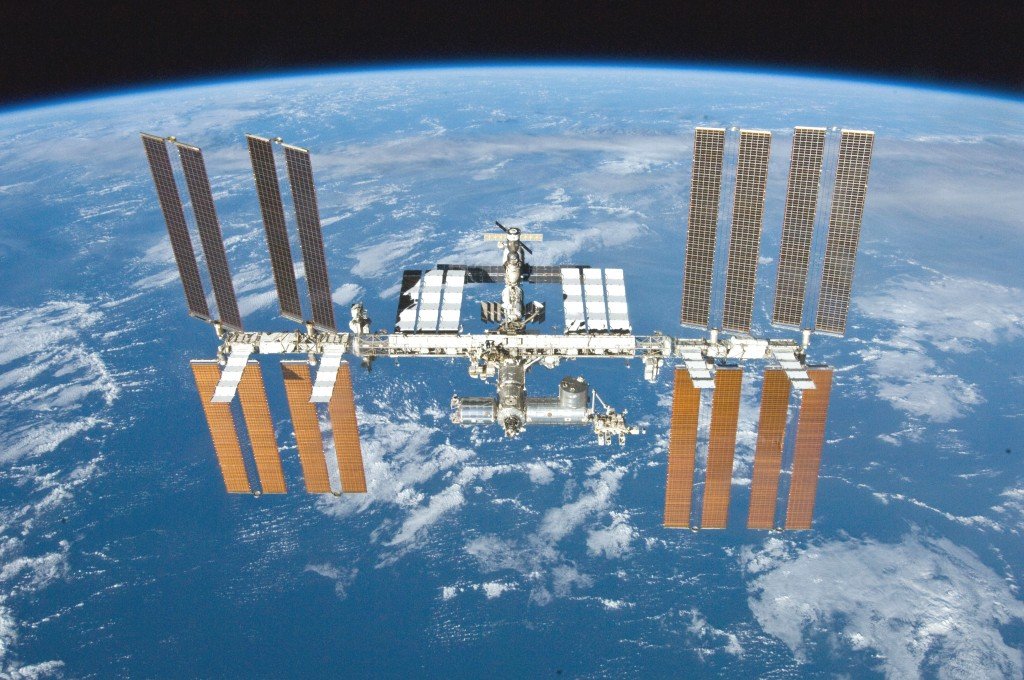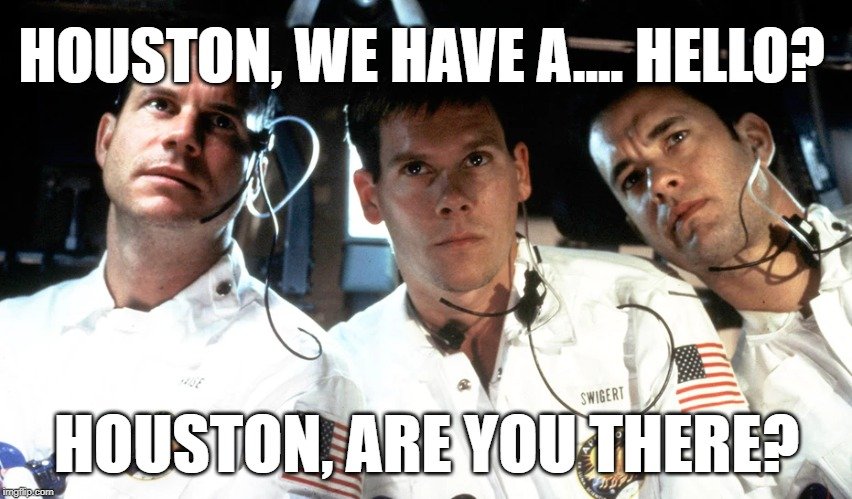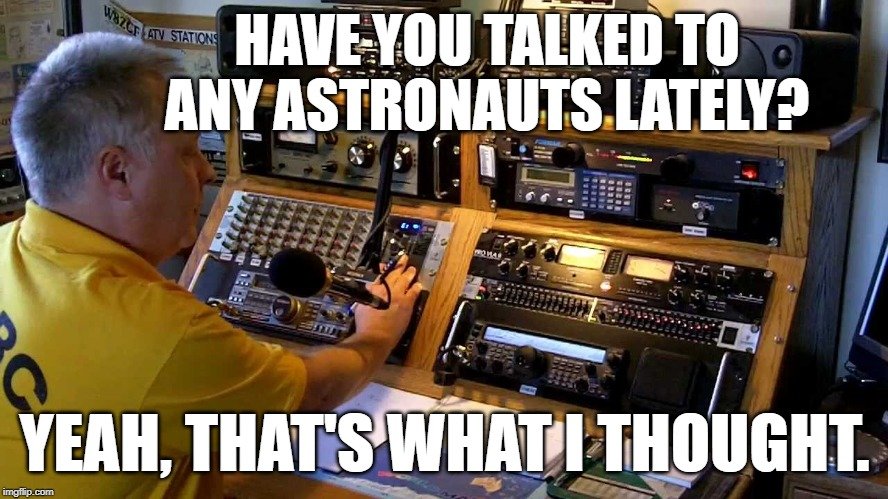Table of Contents (click to expand)
Astronauts onboard the ISS communicate with each other using English, as it is the international language of space. They also communicate with people on Earth using the Tracking and Data Relay Satellite system, which consists of a series of seven satellites. Finally, they communicate with amateur radio operators on Earth using the HAM radio onboard the ISS.
If you’re an avid stargazer, or someone that knows their way around a telescope, you’ve likely spotted fast-moving spots in the sky, somewhere between a stationary point of light, a shooting star, and a trick of the eye. What you’ve probably witnessed in that case is a satellite, and when it comes to manmade satellites orbiting out planet, none of them are as impressive or significant as the International Space Station.

It is the most expensive object ever built, as well as one of the most complex, and can even be seen from Earth with the naked eye. People have thousands of questions about this international collaboration that has been inhabited for more than 20 years, but the most common ones relate to communication. More specifically, how do astronauts from different countries talk to one another? And how they communicate with those people back on Earth?
Let’s take a closer look at these different questions and subjects in a bit more detail.
Communicating On The ISS
Astronauts from more than a dozen countries have been a part of the ISS crew, including the United States, Russia, Canada, Japan and 11 member countries of the European Union. Obviously, that means many different languages coming together in a setting where clear communication is critical to safety and survival. In the early days of the ISS, it was decided that English would be the international language of space, per se. Thus, any astronaut going to the ISS must have some level of fluency in English, not only to be able to communicate with others onboard, but also to read the signage onboard, much of which is in both Russian and English.

Interestingly enough, Russia retains a good deal of control over the comings and goings to the ISS, due to their being the only country with a rocket system that can deliver and return astronauts to the station. Their rocket system, in fact, has all of its controls and directions in Russian, which necessitates that astronauts also have moderate knowledge of Russian. In other words, an astronaut from Japan who is becoming a resident onboard the ISS would need to learn Russian and English—not an easy task, as both are from two different language families than Japanese—before he could become a part of the team and be launched up to the station.
Also Read: How Do Astronauts Get Drinking Water In Space?
Communicating Outside The ISS
If you’ve seen the movie Gravity, then you may have a deep-seated fear of spacewalks, i.e., leaving the safety of a space shuttle to fix something outside, with nothing around you but the infinite expanse of space. Even the thought of such an experience is enough to send a shiver up most spines, but astronauts do need to step into the void once in a while. Maintaining communication in that situation is extremely important.

You may have heard the phrase, “In space, no one can hear you scream”, and that’s because sound waves can’t propagate without an atmosphere. So, how can astronauts talk to one another if they’re on a joint spacewalk? Well, even though sound waves can’t move without an atmosphere, electromagnetic waves can. Astronauts’ helmets are equipped with a transmitter than converts the sound waves of their voice into radio waves, which can be transmitted through space. Although radio waves are easily associated with “sound”, they are actually on the electromagnetic spectrum, and can therefore be transmitted in the same way as light—no atmosphere required!
Connecting With Earth
People who pay attention to the goings-on of the ISS may assume that the astronauts and cosmonauts stay in constant contact with mission control during a mission, but that wasn’t always the case. In the years leading up to the ISS launch, it became clear that 100% coverage was required to adequately support satellites that were in Low-Earth Orbit. The Tracking and Data Relay Satellite system consists of a series of seven satellites, some of which have been in geosynchronous orbit around our planet for more than 20 years.

With these satellites in place, those onboard the ISS are able to maintain contact and communication with ground control at all times. Although the ISS typically operates like a well-oiled machine, there are countless variables and potential risks in the emptiness of space that could become a serious problem. For example, if the ISS were to be struck by a large piece of space debris and suffer severe damage to a solar panel or the main compartments of the station, immediate action would need to be taken. Any lag or lack of communication with ground control could be disastrous. While the high concentration of low Earth orbit satellites is worrying—due to the growing issue of space debris and safe launch paths—these tracking and data relay satellites are essential for keeping the ISS safe.
Also Read: How Do Satellites Work?
Connecting With The World
If you’ve ever wanted to talk to an astronaut and learn what life is like for those distant adventurers, you actually can! As mentioned earlier, radio waves are the best way to communicate between astronauts, but they are also useful for communicating with regular people just like you! There is a HAM radio onboard the ISS, and for those amateur radio operators on Earth, this means that you can speak directly to the astronauts onboard!
Granted, it isn’t like having Mark Kelly on your speed dial; the ISS is traveling at roughly 5 miles per second, so in any given area, the station will only be in HAM radio range for about 10 minutes. Considering what a unique and cool opportunity for kids and adults alike, the ISS has launched Amateur Radio On The International Space Station, which helps engage young people with the marvels of science and space, while also providing information on how and when you can reach out and speak right to the astronauts onboard!

Also Read: Can You Get Internet On The Moon?
A Final Word
While it may seem like speeding around the planet at 5 miles per second, 250 miles above the surface, would be alienating, there are a surprising number of ways that astronauts can communicate, both with their fellow space travelers and the world far below. Utilizing everything from rudimentary tools to the most cutting-edge equipment, the ISS remains a testament to past collaborations and a template for joint progress towards global goals in the future.
Also Read: If The ISS Is Not Stationary, How Are Rockets Launched To It?
How well do you understand the article above!

References (click to expand)
- Hamming it Up on the ISS - NASA. The National Aeronautics and Space Administration
- What Is The Most Expensive Object Ever Built? - zidbits.com
- The Challenge of Communication in Space. The National Air and Space Museum of the Smithsonian Institution
- U.S. tracking and data relay satellite - Wikipedia. Wikipedia
- International Space Station - Wikipedia. Wikipedia
- Thirsk, R., Kuipers, A., Mukai, C., & Williams, D. (2009, June 1). The space-flight environment: the International Space Station and beyond. Canadian Medical Association Journal. CMA Joule Inc.
- Teles, J., Samii, M. V., & Doll, C. E. (1995, January). Overview of TDRSS. Advances in Space Research. Elsevier BV.
